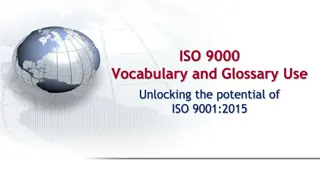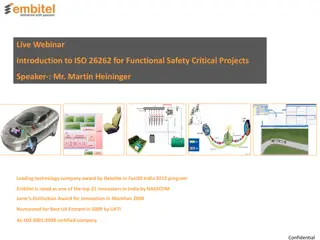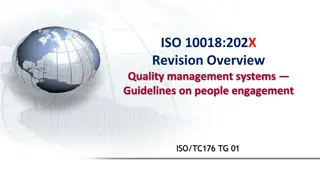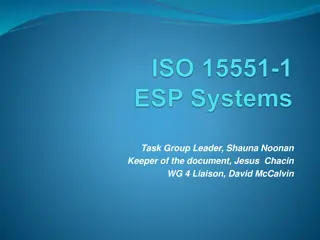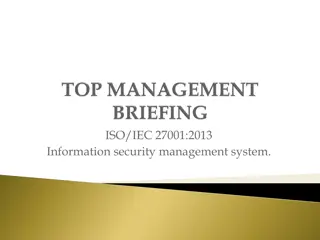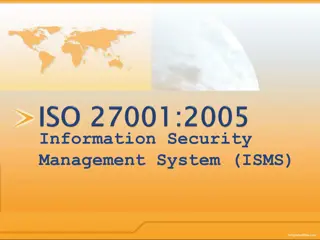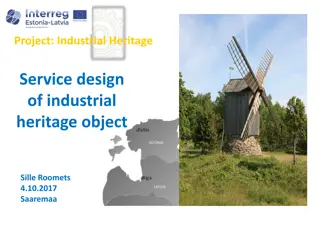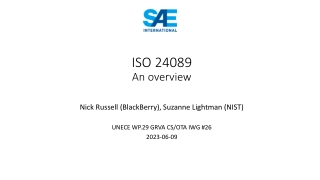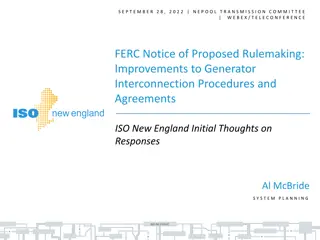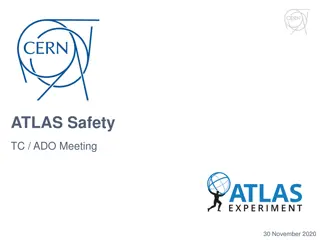Understanding Human-Centered Design in ISO 9241-210 by Albrecht Schmidt
Explore the differences between User-Centered Design (UCD) and Human-Centered Design (HCD) as per ISO 9241-210 standards. Delve into the principles and activities of HCD, the rationale for adopting it, and its significance within interactive systems. Learn why HCD emphasizes the holistic perspective of individuals and how it aligns with modern design practices.
Download Presentation

Please find below an Image/Link to download the presentation.
The content on the website is provided AS IS for your information and personal use only. It may not be sold, licensed, or shared on other websites without obtaining consent from the author. Download presentation by click this link. If you encounter any issues during the download, it is possible that the publisher has removed the file from their server.
E N D
Presentation Transcript
Human Centered Design ISO 9241-210 Albrecht Schmidt 1
Learning Goals Understand The terms user centered design (UCD) and human centered design (HCD) The general structure of the ISO 9241 Ergonomics of human system interaction The ISO 9241-210 Human-centered design for interactive systems The problems of user centered design Be able to explain Rationale for adopting human-centered design according to ISO 9241-210 Principles and activities of human-centered design according to ISO 9241-210 The separation between interaction design and technical realization Human Centered Design Albrecht Schmidt 2
User Centered Design vs. Human Centered Design The terms are used interchangeable Human centered is the more modern term With the term human centered the focus should be on the person as a whole not only the user Human Centered Design Albrecht Schmidt 3
ISO Standards and DIN Norms Human Centered Design Albrecht Schmidt 4
ISO 9241 Ergonomics of human system interaction Many parts with specific focus Part 1: General introduction Part 2: Guidance on task requirements Part 3: Visual display requirements Part 4: Keyboard requirements Part 110: Dialogue principles Part 151: Guidance on World Wide Web user interfaces Part 171: Guidance on software accessibility Part 210: Human-centered design for interactive systems Part 420: Selection procedures for physical input devices Part 910: Framework for tactile and haptic interaction Part 920: Guidance on tactile and haptic interactions ISO 9241 Ergonomics of human system interaction Human Centered Design Albrecht Schmidt 5
ISO 9241 Ergonomics of human system interaction Part 210: Human-centered design for interactive systems Table of Contents 1. Scope 2. Terms and definitions 3. Rationale for adopting human-centered design 4. Principles of human-centered design 5. Planning human-centered design 6. Human-centered design activities 7. Sustainability and human-centered design 8. Conformance ISO 9241-210:2019(EN) Human-centered design for interactive systems Human Centered Design Albrecht Schmidt 6
ISO 9241-210 Human-centered design for interactive systems 3. Rationale for adopting human-centered design Using a human-centered approach to design and development has substantial economic and social benefits for users, employers and suppliers. Highly usable systems and products tend to be more successful both technically and commercially. Systems designed using human-centred methods improve quality, for example, by: a) increasing the productivity of users and the operational efficiency of organizations; b) being easier to understand and use, thus reducing training [ ] costs; c) increasing usability for people with a wider range of capabilities [ ] d) improving user experience; e) reducing discomfort and stress; f) providing a competitive advantage [ ] g) contributing towards sustainability objectives. ISO 9241-210:2019(EN) Human-centered design for interactive systems Human Centered Design Albrecht Schmidt 7
ISO 9241-210 Human-centered design for interactive systems 4. Principles of human-centered design a) the design is based upon an explicit understanding of users, tasks and environments [ ] b) users are involved throughout design and development [ ] c) the design is driven and refined by user-centered evaluation[ ] d) the process is iterative[ ] e) the design addresses the whole user experience [ ] f) the design team includes multidisciplinary skills and perspectives ISO 9241-210:2019(EN) Human-centered design for interactive systems Human Centered Design Albrecht Schmidt 8
ISO 9241-210 Human-centered design for interactive systems 6. Human-centered design activities a) understanding and specifying the context of use What are the tasks or objectives associated with the design? b) specifying the user requirements What expectations or requirements must the design accommodate? c) producing design solutions prototyping, rendering, mockup building, implementation d) evaluatingthe design Conduct initial evaluations, usability testing, and ergonomic assessment ISO 9241-210:2019(EN) Human-centered design for interactive systems Human Centered Design Albrecht Schmidt 9
ISO 9241-210 Human-centered design for interactive systems 6. Human-centered design activities Plan the human- centered design process Design solution meets the user requirements Understand and specify the context of use Iterative where appropriate Evaluate designs against requirements Specify the user and organizational requirements Product design solutions to meet the user requirements ISO 9241-210:2019(EN) Human-centered design for interactive systems Human Centered Design Albrecht Schmidt 10
Software Process vs Human Centered Design Process Mini-Exercise Will the human centered design process work well with the waterfall model? Does it fit agile software development methods? Requirements Design Implementation Verification Maintenance Cliffydcw / CC BY-SA Human Centered Design Albrecht Schmidt 11
Separation between interaction design and technical realization Separation into a two stage process for interactive applications 1st Concept development and Interaction design (quick iterations) Application and interaction concept Interaction design Prototypes to evaluate the concept and interaction design 2nd technical realization (slow iterations) Technical analysis Technical specification (e.g. architecture, platform) Implementation Evaluation and Quality management Human Centered Design Albrecht Schmidt 12
Problems of User Centered Design Users may expect disadvantages (e.g. being replaced by software) Users may have conflicting views Users may be wrong Users may be resistant to change In a business environment you are expected to create a system with regards to the goals specified and this is unfortunately NOT necessarily the system users would like to have There is often a trade-off between the goals of employers (customer) and employees (user) Human Centered Design Albrecht Schmidt 13
How easy is it to work in multidisciplinary teams? Many people are involved in the process of designing and implementing an interactive product Different background (e.g. design, business, CS, marketing, administration) Different and conflicting low level objectives objectives Communication can be very difficult! To be able to work in a team is essential! Team work is a skill that can be learned Human Centered Design Albrecht Schmidt 14
Did you understand this block? Can you answer these questions? What is the ISO 9241-210 standard about? What are potential problems of user centered design What is the rationale for adopting human-centered design according to ISO 9241-210 Name the Principles and activities of human-centered design according to ISO 9241-210 How do the design activities according to ISO 9241-210 relate to each other? Make a sketch. Explain how interaction design and technical realization can be separated and why this may be useful. Human Centered Design Albrecht Schmidt 15
References ISO 9241 Ergonomics of human system interaction ISO 9241-210:2019(en) Human-centered design for interactive systems Human Centered Design Albrecht Schmidt 16
This file is licensed under the Creative Commons Attribution-Share Alike 4.0 (CC BY-SA) license: https://creativecommons.org/licenses/by-sa/4.0 Attribution: Albrecht Schmidt For more content see: https://hci-lecture.de Albrecht Schmidt 17


